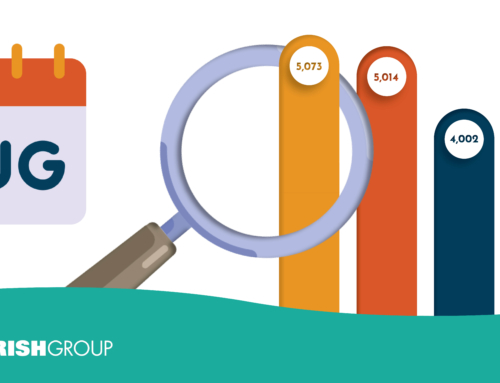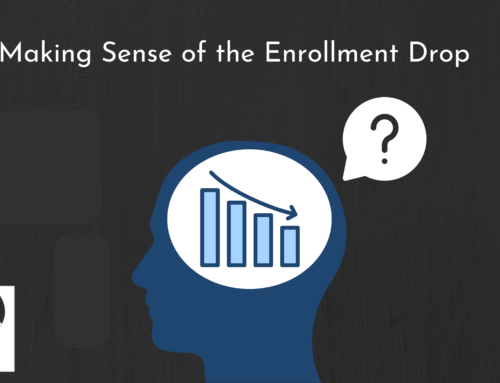
In our first blog on IPEDS (Integrated Postsecondary Education Data System), we went through all the benefits this site poses for enrollment managers.
In this next edition of our IPEDS series, we’ll help you begin data mining using the IPEDS site.
Looking at the IPEDS front page, it’s apparent how vast the data system is, and how much opportunity is available to those who know how to use it correctly.
The system covers 7,000 colleges and universities in the United States that are eligible to receive Title IV federal financial aid.
All of these schools’ data are available free of charge and without needing a username or password.
Accessing the IPEDS Site
When you go to the IPEDS site, click on “Use the Data” located on the first page. Don’t be alarmed if this looks daunting at first glance!
There are eight choices for users — some that direct you to higher ed macro data statistics and some which allow you to create your own data set.
If you’re wanting to look at an institution’s data set quickly, enrollment managers can use the tool “Look Up an Institution” at the top of the page. This will give users a fourteen page PDF consisting of that institution’s data, including their competitors.
Statistical Tables vs. Compare Institutions
For most purposes, enrollment managers will use the other tools to satisfy their needs for benchmarking, report comparisons, and other marketing power tools.
However, you’ll find that you have two options for reporting: ‘Statistical Tables’ and ‘Compare Institutions’.
‘Statistical Tables’ is a great tool if your institution has a well-defined group of like-colleges (women-only, HBCUs, etc.). It allows you to group those schools together for a quick report of your selected data from the 12 areas of IPEDS-controlled data.
The great commodity of this tool is its ease and quick use of data for visual and reporting purposes. Although, this tool does have limited use to your selected college subset and data elements.
‘Compare Institutions’ is the holy grail of data observation. In this section, you can select colleges by groups and individual names.
Within this option, users can select a range of criteria including graduation rates, retention rates, and or number of students receiving Pell grants or institutional grants. Once selection groups and outputs are formed, users will be able to save this criteria for further reporting.
How to Build Your Marketing Database with IPEDS
The first rule of IPEDS reporting is to always output the institutional name and ID number.
Once these data are output into your chosen database (Google Sheets, Excel, or Tableau) you can enrich the original set with options like those listed above.
For example, if you wish to go back to the Compare Institutions tool to add retention rates to your application data, download the retention data and use vertical lookup (in Excel) to enrich your original database. This exercise is easy since you kept “Unit ID” as a data element for your database.
It’s important to have your marketing database plan determined prior to your reporting exercise.
If you are tasked by presidents or governing boards to address retention rates, institutional financial aid spending, or academic profiles, it’s easy to enrich your database. But like all these, planning is crucial!
Additionally, determine your needed enrollment management metrics that are adjustments (those data points not naturally a part of IPEDS, but computed from the IPEDS data) to the IPEDS database.
Utilizing IPEDS to Determine Net Tuition Revenue
The foremost EM adjustment metric might be Net Tuition Revenue (NTR) as this metric is the fundamental element for determining college revenue and, ultimately, college viability.
NTR provides a simple measurement for tracking net tuition revenue for each first-year student, regardless of government support.
NTR is derived from three downloadable IPEDS data points: (1) Full-time, first-year students, (2) total amount of institutional grant money awarded to full-time, first-year students and (3) tuition charges.
After these items are downloaded, the user divides “total scholarships” by the number of “full-time, first-year students” to render the average scholarship spending per student.
Finally, the user takes tuition charges and subtracts the average scholarship spending to deliver the most prized data point: NTR! Of course, all of this magic is easily managed within an Excel or Google Sheets formula.
The Necessity of Data Aerobics
Why is it crucial to jump through these data hoops when IPEDS delivers a Net Cost data element?
(Net Cost is derived from the following IPEDS built-in equation:
[tuition + fees + room and board] -[total institution grants and all government grants] = Net Cost)
This metric is highly influenced by federal Pell grants and state grants — need and merit-based.
In many states, net costs include an inordinate amount of state merit money for state residents. Net Costs reflect the college’s social-economic tradition and academic profile.
NTR provides a simple and clean metric for tracking net tuition charges for each first-year student. It is good for tracking true tuition charges for students and estimating the college’s gross revenue.
Combining the Compare Tool with an Adjustment Metric
Above we discussed the compare tool. We could use the IPEDS research instrument to search out two criteria: state jurisdiction and sector.
If we used these to include Oregon and private, non-profit four-year colleges, we would zero in on 13 colleges.
Next, we would download the first-year students, first-year institutional scholarships and tuition charges. From these data elements, we could compute that the mean NTR is $16,889.
However, the school we wish to research has an NTR of $20,273, but their enrollment objectives are not hitting the goals.
Using these IPEDS data sources from Compare and combining this with our adjusted data metrics, we can ask pointed questions about our EM plan:
Could we enroll more students with greater scholarship spending? Could our enrollment numbers be met and our revenue numbers to create a pricing plan closer to the norm in our set of colleges?
The Age of Data Exploration with The Parish Group
It is time to explore IPEDS and we encourage you to delve into the reporting potential for your enrollment planning process.
The tools are available for each EM to be a better data manager and a skilled advocate for your enrollment plan. You can be an expert on campus and in your profession.
Take the plunge. Become an IPEDS geek.
If you need help along the way, The Parish Group is here for you. Give us a shout at success@parishgroup.com or call our office at 828-505-3000.







